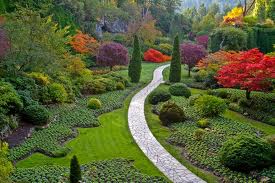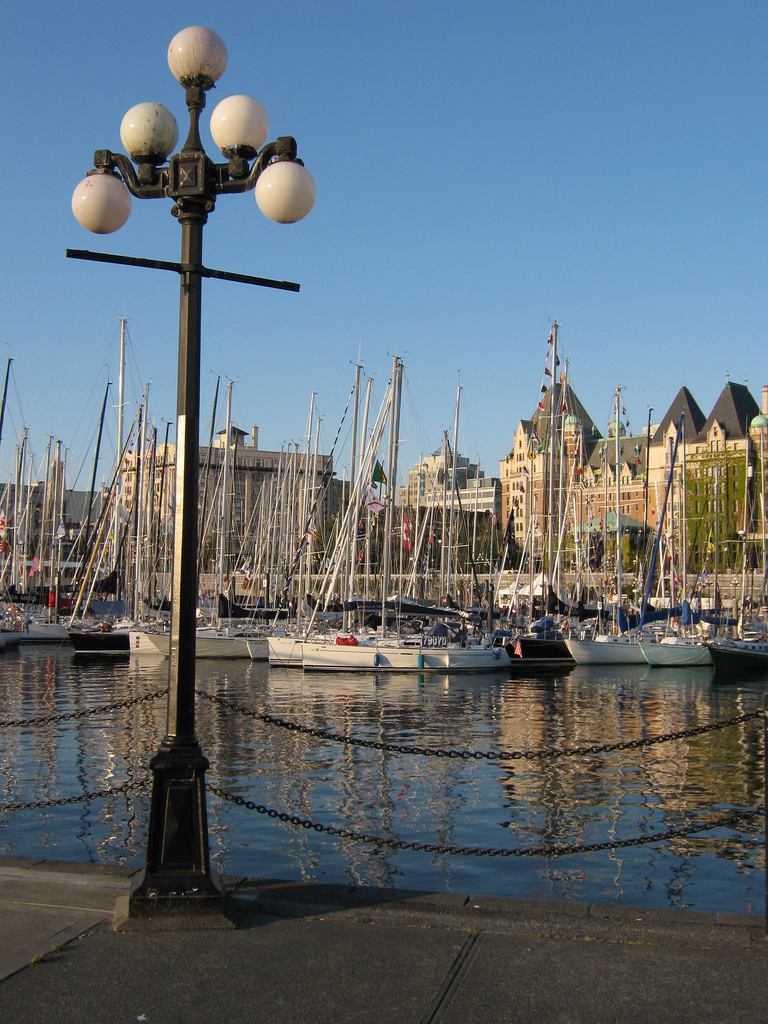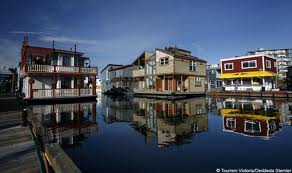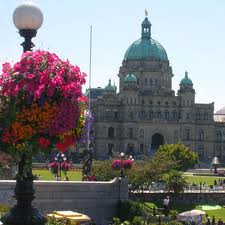Victoria BC Walking Tours is definitely one of the first things to do while visiting our city!
Also, there are many other guided walks besides the daily private walking tours of Victoria BC we operate, that you may want to join:
GHOSTLY WALKS by discoverthepast.com
Ghostly Walks are Victoria BC walking tours conducted every night from May 1 to October 31 and on weekends through the rest of the year. Ghost tours for booked groups may be arranged at any time. The tours have been developed by John Adams, one of Victoria's foremost historians and storytellers, who has been leading ghost tours through the alleys and haunted places of Victoria since 1970. He has appeared on the TV series Ghosts and Ghoulies and on OLN's Creepy Canada. The tours are conducted by John and his team of expert Victoria BC Walking Tours guides.
CHINATOWN WALKS by discoverthepast.com
Chinatown in Victoria, British Columbia, is the oldest in Canada and has been designated as a National Historic Site. Chinatown Walks will bring its history to life for you. Founded in 1858 during the early days of the Fraser River Gold Rush, Chinatown was the port of entry for all Chinese arriving in Canada for many years. During construction of the Canadian Pacific Railway in the 1880s Victoria's Chinatown housed almost half of the city's total population. Now much reduced in size, it still retains important heritage buildings and remains the cultural home of many Chinese throughout Canada. This are Victoria BC Walking Tours you should not miss.
DISCOVERY WALKS by discoverthepast.com
Distinctive and memorable walking tours in Victoria, BC. Chinatown, Rockland, Old Town, James Bay, Oak Bay and more!
Monday: Rockland Mansions Tuesday: Rum Runners Wednesday: Parliamentary Precinct Thursday: Jewish Victoria Friday: Emily Carr Memories and Mysteries Saturday: Natural History and Memories and Mysteries Sunday: Cathedrals and Convents
Discovery Walks have been around since 2001 and focus on Victoria's diverse history. They are 90-minute leisurely walks designed to give residents and visitors an extra understanding of specific neighbourhoods and interesting themes that often are overlooked. Discovery Walks are researched and conducted by a small team of local historians, artists and experienced Victoria BC walking tour guides who are passionate and very knowledgeable about their topics.
AIBC's Architectural Walking Tours
The AIBC’s Architectural Walking Tours program offers unique perspectives of the cities of Victoria. Those interested are invited to take advantage of six distinct Victoria BC walking tours. For more details, see the tour brochures (links below).Summer tours are offered throughout July, August and early September (see tour brochures for schedule). In addition, it may be possible to accommodate group requests ($150/tour) at other times throughout the year, depending on tour guide availability. Please e-mail your request to tours@aibc.ca or call (604) 683-8588.
AIBC's Architectural Walking Tours: INNER HARBOUR
Experience the magnificent golden age of Victoria’s downtown Inner Harbour and surrounding areas. Explore the heritage of this
once central public space and learn about the many changes that have taken place throughout the history of this relatively young city. See one of the most visited areas of Victoria, including the magnificent water views of Canada’s west coast. Take in the
Legislature buildings and the Empress Hotel as you learn how Victoria became the capital of British Columbia. Take a Victoria BC walking tour along Government Street to discover the historic buildings that have been transformed into the area’s retail and office spaces, and hear the story of B.C. architect Sir Francis Rattenbury and his influence on many prominent buildings in Victoria.
AIBC's Architectural Victoria BC Walking Tours: FORT VICTORIA
Learn about the development of Victoria, from a small Hudson’s Bay Company fur-trading fort to the provicial capital it is today. Follow the outline of the fort walls along Government Street, and learn about the architectural conservation and re-use strategies employed over time. Explore Bastion Square, once the heart of Victoria’s legal community, and Wharf Street, the city’s original “Commercial Row” converted into residential and commercial spaces.
AIBC's Architectural Victoria BC Walking Tours: CHINATOWN
Explore public plazas and back alleys from Yates Street to Waddington Alley and Johnson Street, the heart of Old Town. Inspect surrounding examples of circa-1880 architecture, Market Square, and Fan Tan Alley. Learn about the culture, social, and architectural history of Canada’s oldest Chinatown, and discover the gems found along Douglas Street including the Hudson’s Bay Company Store, City Hall and Centennial Square.
AIBC's Architectural Victoria BC Walking Tours: ECLESIASTICAL
Enjoy a brisk walk featuring Victoria’s rich legacy of religious architecture. Visit the city’s two cathedrals and Canada’s oldest surviving syngogue. See how historical events have shaped and changed the look and feel of some of Victoria’s most impressive buildings. See what remains of a pioneer cemetery and stroll through the grounds of early 19th century buildings of worship. The sheer size and massing of these buildings is enough to make you want to learn more.
AIBC's Architectural Victoria BC Walking Tours: JAMES BAY
Discover James Bay, Canada’s oldest residential neighbourhood on the West Coast. Learn about the historic homes of some of Victoria’s most influential residents, dating back to the days of colonial administration.Explore houses built in architectural styles from Queen Anne Cottages to Arts & Crafts, many of which have been designated as Provincial Heritage sites. Nearing Beacon Hill Park, you’ll find Emily Carr House, the childhood home of the famed B.C. artist and writer.
AIBC's Architectural Victoria BC Walking Tours: ART DECO/MODERN
In the 1920’s, Victoria architects embraced the stylized, geometric Art Deco and Style Moderne, the latests trends emanating from Paris and New York. Discover how these styles suited new building types and businesses, and how they altered traditional approaches to the use of stone, marble and concrete. This tour includes a look at some of the city’s innovative banks, office buildings, motels and residences, as well as the Inner Harbour’s landmark Information Centre Tower.
toursbylocals.com: Deluxe Wine Country Victoria BC Walking Tours
This is a highly recommended deluxe tour for the true wine enthusiast or just someone who is eager to learn while taking in the exquisite sights and experiences of the Island's wine country. Begin your excursion day with a relaxing ride past unparalleled forest scenery, expansive countryside vistas and a stop at the breathtaking viewpoint over the Malahat where you can see the expanse of the Salish strait and Gulf Islands. You will have the opportunity to stop at charming wineries and to taste the fine wines and ports of British Columbia, plus a visit to picturesque Cowichan Bay and visit to a cider distillery. Enjoy lunch in one of the wineries that serve wonderful local food. Whatever your interests, I will help make your day in wine country a lovely and truly special day to remember.
toursbylocals.com: Back-Country Victoria BC Walking Tour to The Butchart Gardens
Enjoy a stunning scenic drive along country roads with beautiful farms and rural estates, forest lakes and the breath-taking Brentwood Bay on our way to the Butchart Gardens. We can stop anywhere you would like and take photos.
We will then visit and take a stroll through the enchanting and world-renowned Butchart Gardens, a 55-acre garden that was established in 1906 and grew into a botanical wonder. We explore the grounds at our own pace with time for lunch and High Tea if you wish and shopping at the gift shop. I personalize all my tour to include other points of interest you may want to visit such as a sea excursion along Oaky, sightseeing in Victoria Harbour, The Royal Museum, Emily Carr's Home and The Empress Hotel. I am familiar with many great places in Victoria BC and can offer interesting stories and data. So leave those huge tourist buses behind and enjoy your exclusive and fun filled tour with me, your private local guide for Victoria BC Walking Tours.
toursbylocals.com: Great homes and neighbourhoods of Victoria BC Walking Tours
A picture is worth a thousand words. Please take a look at the images of the amazing places you will be experiencing in this sea side exploration of Victoria BC: Majestic mountain vistas, lush gardens and parks, Victorian Villages of quaint shops and grand homes. See history in unique streets, architecture and gardens, in a leisurely drive and stroll. Photography, fresh air, a variety of interesting points of interest make this tour a very pleasant and special experience. I personalize all my Victoria BC walking tours to your schedule and pace.





